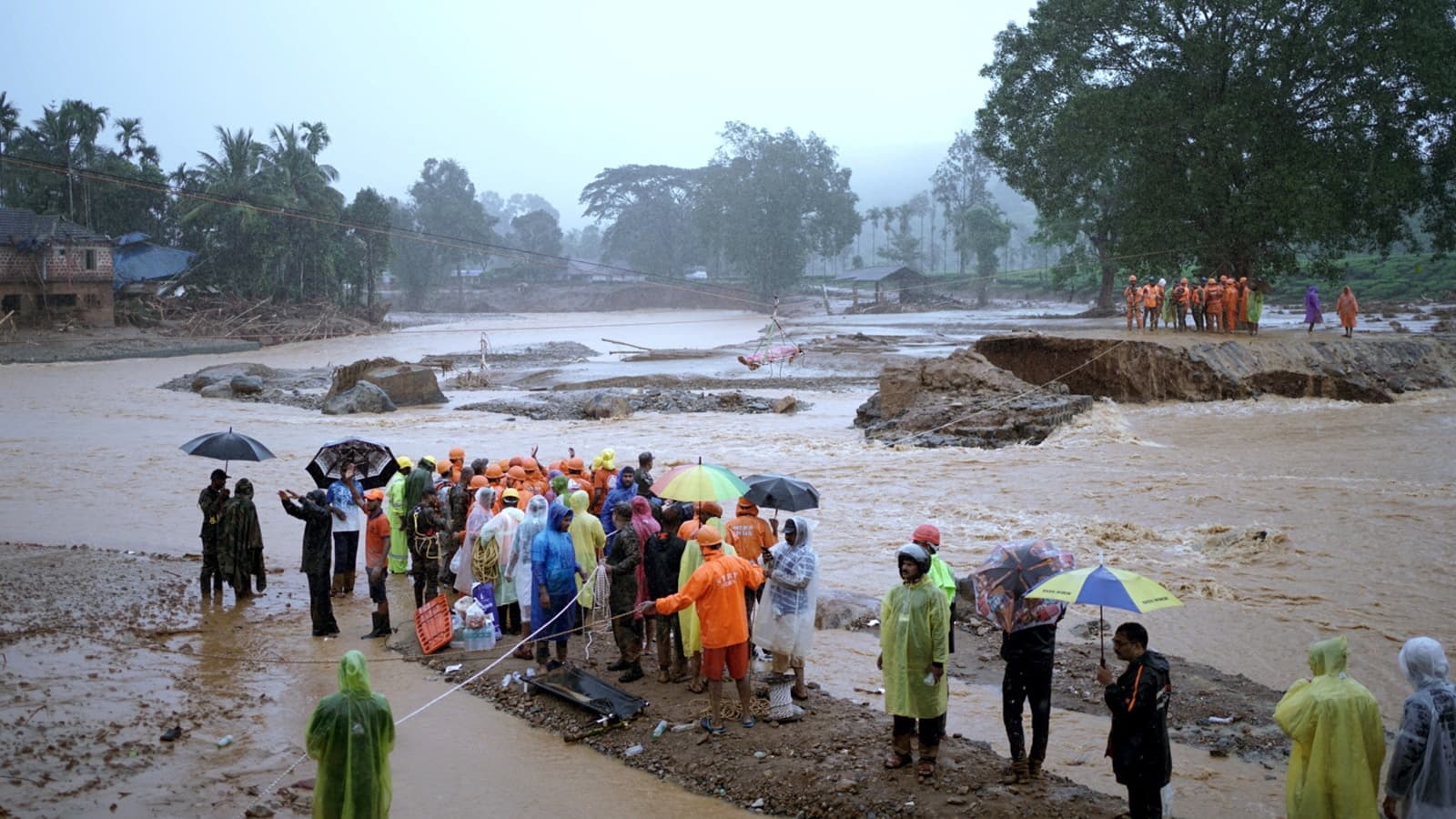
Death Toll from Kerala Landslides Rises to 284: National Green Tribunal to Take Up Suo Moto Case
240 people still missing following a series of landslides in Wayanad district
The death toll has risen to 284, with over 200 injured as of Thursday morning, following a series of devastating landslides in the hilly areas near Meppadi in Wayanad district in the Indian state of Kerala.
State Chief Minister Pinarayi Vijayan has confirmed that 240 people remain missing, while more than 1,500 have been rescued from the affected areas. Over 70 bodies were recovered from the Chaliyar River, several kilometers downstream.
Heavy rains, which struck one of India’s most popular tourist destinations, caused hillsides to collapse and triggered torrents of mud, water and boulders.
Most of the 350 families living in the area, surrounded by tea and cardamom estates, were caught off guard by the landslides early Tuesday morning. This disaster is the worst the state has seen since the deadly floods of 2018.
Man-made Disaster
Experts say this man-made disaster should be a wake-up call for all other states, including Tamil Nadu, which allowed unregulated and unscientific constructions in the hilly regions without conducting proper risk assessment.
The southern bench of the National Green Tribunal (NGT) expressed concern over unprecedented landslides that rocked Wayanad and decided to take-up suo moto hearing.
The bench comprising judicial member justice Pushpa Sathyanarayanan and expert member K. Satyagopal have asked the registry to list the case and directed the Kerala standing counsel to collect data on trigger points such as roads, buildings and existing quarries in and around the affected villages.
Pusha Sathyanarayanan said: "We are deeply concerned."
Experts say this man-made disaster should be a wake-up call for all other States, including Tamil Nadu, which allowed unregulated and unscientific constructions in the hilly regions without conducting proper risk assessment.
The Western Ghats Ecology Expert Panel (WGEEP) report submitted to Union environment ministry way back in 2011 had included Vythiri, Mananthavady and Sultan Bathery taluks in Wayanad in 'ecologically sensitive zone (ESZ)-1', which means that change in land use is not permitted from forest to non-forest uses or agricultural to non-agricultural.
In Tamil Nadu, popular tourist destinations like Kodaikkanal, Ooty, Gudalur, Kotagiri, Ambasamudram, Pollachi etc were included in ESZ-1. But this report prepared by ecologist Madhav Gadgil was never implemented.
"If Ooty and Coonor in Nilgiris experience over 30 cm rainfall, it could lead to a similar disaster. The government must urgently carry out a scientific study, identify the landslide prone hotspots and put a ban on new constructions.
The soil in those areas should be strengthened by increasing the green cover," G. Sundarrajan, convenor, Poovulagin Nanbargal (Friends of the Earth), an environmental organisation in Tamil Nadu said.
Coming back to Kerala's situation, in the book 'Flood and Fury' written by prominent journalist Viju B, it is said that the northern side of Wayanad, especially in Thirunelli and Mananthavady panchayats, there are many places where the surface of the earth has cracked and there are wide gaps as if the earth below has moved.
The region has some of the oldest rock formations in the world, as old as 2,500 lakh years.
Mananthavady and Vythiri were flooded because 75% of the streams which is the primary water source of Panamaram and Mananthavady, whose confluence becomes the Kabini River, has been reclaimed. Buildings and roads had come-up over them.
The soil survey department in 2017 showed that 70% of the first and second-order streams that joined three rivers at Panamaram, Mananthavady and Basavali had been encroached upon. The Geological Survey of India (GSI) had conducted a spot survey following landslides in Kozhikode, Kannur and Wayanad post the 2018 floods.
The GSI's findings pointed out that though in a majority of the cases, incessant rains were one reason for the landslides, what triggered the event in many cases was unscientific construction on the hill slopes.
For any enquiries or information, contact ask@tlr.ae or call us on +971 52 644 3004. Follow The Law Reporters on WhatsApp Channels